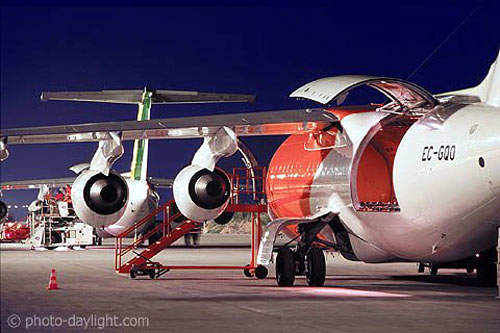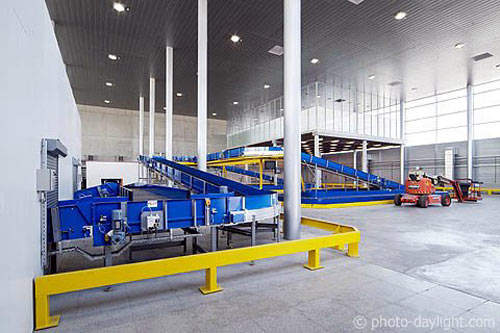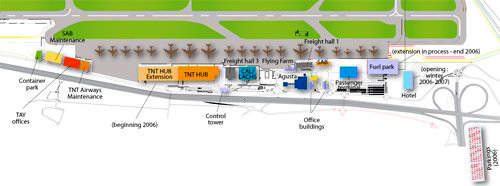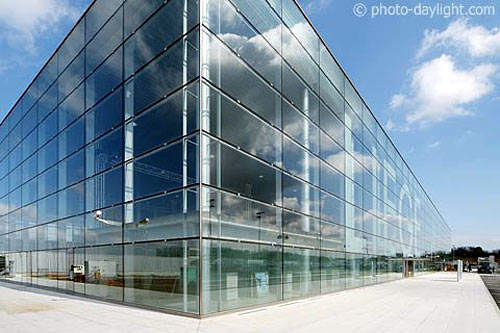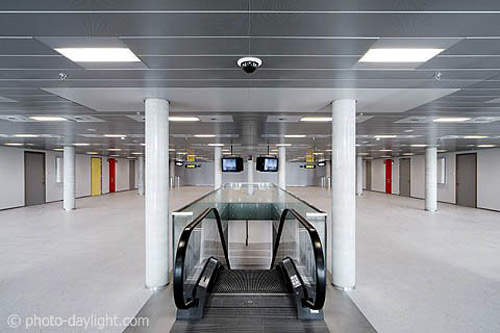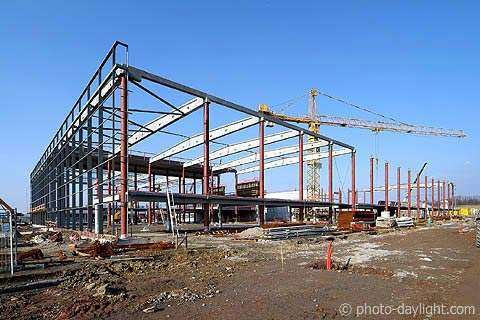With most airports in Europe trying to surpass all previous records for passenger numbers, Liège is somewhat of a rarity. Although the airport handles passenger flights to 21 different cities (mostly charters) and has an excellent passenger terminal, its main business comes from handling cargo.
The airport, situated north-west of Liège, is one of the pre-eminent cargo airports in Northern Europe. It is the largest cargo airport in Belgium and the eighth largest in Europe. Liège is ideally placed to act as a stop-over hub since it is situated in the middle of the ‘Golden Triangle’ of airports (Paris-Amsterdam-Frankfurt) that handle over 66% of freight in Europe (75% of European freight, if London is included).
One of the main reasons for its success as a cargo facility must come from its use by TNT (the US courier) as its main European hub. The company managing the airport is (SAB) Société de Développement et de Promotion de l’Aéroport de Bierset (company for the development and promotion of Bierset Airport).
The airport was converted in 1990 from a military installation to a cargo facility as a joint venture between Société Régionale Wallonne des Transports (SRWT) and the airports authority for Paris and at that time SAB was created to undertake the management.
Liège (Bierset) airport business
The main cargo companies at the airport include TNT, Israel Cargo Airlines (CAL) fruit, vegetables and flowers, KALITTA, El Al and Icelandair (fish). In total there are more than 50 cargo customers.
The main passenger companies using the airport for flights are Thomas Cook Airlines and JetAirFly.
In September 2007 preliminary figures for cargo business at the airport recorded a growth of 17% compared with 2006. In 2008, the airport handled 518,650t of cargo, a record year for the airport. Cargo handling by the airport was recorded at 639,434t in 2010.
Liège airport facilities
The airport has two parallel runways – 05R/23L (12,139ft, 3,700m) and 05L/23R (7,677ft, 2,340m) – both of which are paved in asphalt. In April 2005, Liège Airport opened its new €26m passenger terminal. This had the effect of tripling the passenger capacity of the airport to one million passengers a year. Passenger traffic at the airport was 299,043 in 2010.
The 116m x 72m terminal is a fully glazed steel structured building with 12m-high steel columns and pre-stressed concrete beams. The gates all have a span of 36m and there is 8,350m² of floor space.
The façade of the building is composed of eight glazed units (each 160cm x 360cm) with a ‘blade’ separating each unit.
The architects were Greisch and the building contractor was Jacques Delens of the BESIX group. Construction took place between 2003 and 2005.
Liège Airport – new projects
One of the most exciting projects at Liège was the construction of a new TNT cargo terminal. The airport has been going through a period of change with a number of projects being completed such as the opening of the new Park Inn hotel at the airport, as well as airport infrastructure improvements such as the refurbishment of the main runway 05R/23L in only five weeks during 2006.
Liège constructed a series of new parking stands (apron) in the north of the airport for long-haul aircraft (four stands, including two capable of accommodating the A380, were completed in 2006, and six other stands (B747) were completed by late 2007). In addition, the airport extended its fuel storage capacity from one million litres to six million litres by the end of 2007.
Liège has also constructed a new freight park (lorry park, car park and docking and storage areas) on an 80ha site in the northern area of the airport (developed as the ‘cargo city Nord’, first phase 6,250m² (investment of €6.1m) and second phase 12,000m²). The first phase of the project was completed in February 2008. The contractor for the hangar was Wust.
Liège handled 639,434t of cargo in 2010. The airport’s main 3,287m runway was expanded to 3,700m in September 2010. New warehouses measuring 25,000m² were also constructed at the airport along with new office buildings. The total amount to be invested in the expansion was €30m.
TNT terminal construction
The TNT hub, owned by TNT Express worldwide, is one of the mainstays of Liège Airport and it was a boost to the airport when they decided to expand the facility. In 2004 the final investment decision was taken by TNT to spend €94m to expand the existing facility at Liège and actually double its floor space (construction costs estimated at €16.5m).
The expansion involved the construction of a new steel structure (steel frame and steel clad) adjoining the existing one, which is 213m long and 93m wide (sorting zone 191m x 93m and technical zone 22m x 93m). The two buildings have been separated by a fire-resistant wall as part of building and safety regulations. The building also includes two intermediate levels in parts of the building suspended from the roof beams to increase storage space.
In addition, part of the building (6,000m²) is constructed from concrete to house the workshops and related areas. Equipment in the new hub includes a 1t goods lift and a 15t bridge crane. The new building is also provided with a sophisticated surveillance system, including closed-circuit cameras, fire detection, controlled access and intruder detection. There is also an optical fibre network for internal communications.
The architects for the project were Bureau Canevas in conjunction with Greisch. The construction contractor for the hub is Galere and the facility opened in November 2007.

